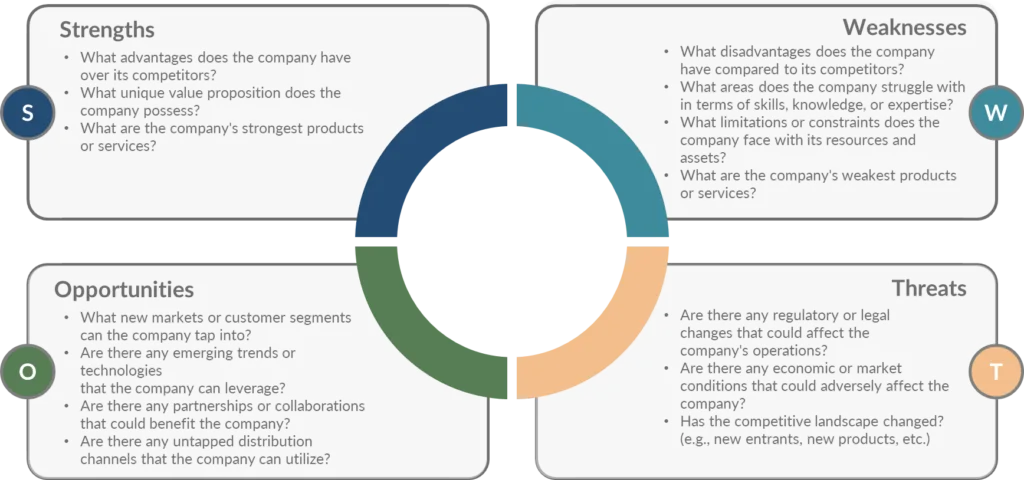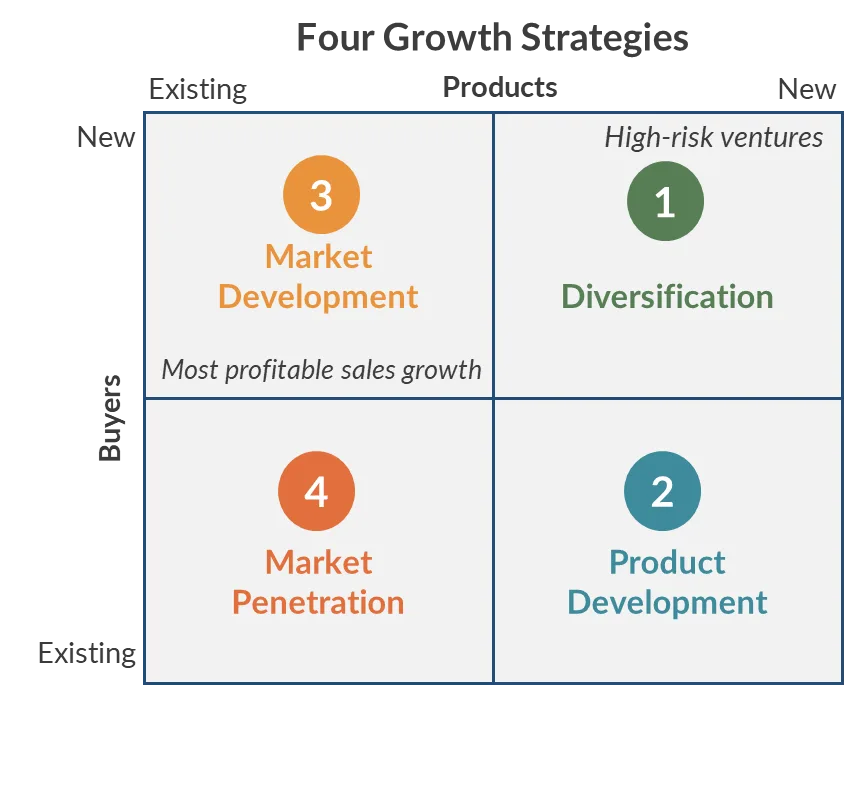In an era where businesses are striving to evolve, a question looms large: How can one achieve sustainable revenue growth? The secret often lies in mastering the art of successful market entry and expansion. But while companies are quick to jump at seemingly ripe opportunities, most stumble on fundamental questions: “Who is the customer?” “What does the customer value?” and “How will we deliver that value at an appropriate cost?” These questions, as pointed out by Harvard Business Review, are often answered based on mere hypotheses—leaving a chasm of uncertainty. Understanding where to focus your efforts can be transformational to find the next 100 million-dollar revenue opportunity.
Before diving into customer targeting, coverage, and the enablement practices of your go-to-market team, this blog starts with growth strategy at its core: analyzing your business landscape and putting forward a product growth strategy. To start, it’s essential to understand both your internal strengths and the external marketplace. One widely used tool to initiate this discovery process is the SWOT (Strengths, Weaknesses, Opportunities, and Threats) analysis.
How to Identify Growth Opportunities
Utilizing a SWOT Analysis
SWOT analysis is a strategic planning tool that can provide invaluable insights into your business landscape. Strengths and weaknesses are internal factors that give a snapshot of your product or offerings. Opportunities and threats, on the other hand, are external elements connected with market dynamics. It’s essential to leverage both these lenses to identify your growth markets effectively.
How do you gather this information? Internal expertise and external research are crucial. Your sales team, for instance, can provide vital inputs as they have regular interaction with customers and a keen understanding of the competitive landscape. Similarly, customer service organizations are well-positioned to shed light on the points of delight and points of frustration associated with your product or service.
The outcome of the SWOT analysis should be a comprehensive, MECE (mutually exclusive, collectively exhaustive) list of opportunities. These opportunities should be quantified in terms of potential revenue and required investment in product and go-to-market efforts. It’s not about drilling down to minute details at this stage but getting a broad understanding of the marketplace to prevent overlooking any unseen growth pockets.

How to Structure & Prioritize Growth Opportunities: 4 Strategies
Using an Ansoff Matrix as a Guide
Once you’ve defined your opportunities, it’s time to strategize. The Ansoff Matrix can guide this process by helping you structure and prioritize growth opportunities across two dimensions: Markets (Existing and New) and Products (Existing and New). The strategies defined in this matrix are Diversification, Product Development, Market Development, and Market Penetration.

- Diversification: This involves launching new products in previously untapped markets. It’s the riskiest strategy as it necessitates investment in product development and market research. However, if successful, it can lead to substantial growth. To minimize risks, thorough market research, identification of potential synergies with existing offerings, and pilot testing are recommended before fully committing to a new market.
- Product Development: This focuses on introducing new products or services to your existing market, capitalizing on your established customer base and market knowledge. However, businesses must be cautious not to cannibalize their existing offerings or overextend their resources. Constant innovation, customer research, and leveraging your established brand to promote new products are essential for success.
- Market Development: This strategy involves expanding the reach of your existing products or services to new customer segments or geographies. It requires a deep understanding of the new target market and may involve adapting your marketing and sales strategies to resonate with the new audience. Considering potential partnerships or acquisitions to expedite market entry is also beneficial.
- Market Penetration: This strategy seeks to increase sales of existing products or services within the current customer base. Being the least risky and costly strategy, it offers the quickest time to value realization. Enhancing product offerings through updates or add-ons, implementing targeted promotions or pricing strategies, and focusing on customer retention and upselling opportunities are effective ways to drive revenue growth and customer loyalty.
Case Study: Industry-leading Healthcare Provider Builds New Revenue Stream
To demonstrate the effectiveness of these strategies, let’s take a look at this case study. A major national insurance provider sought to capitalize on their new product’s rapid growth by expanding their presence in an untapped marketplace. With the product’s success proven—double-digit growth, attractive margins, and surpassed success of traditional product offerings—the insurance provider sought
to build the right go-to-market plan. The client first needed an understanding of their existing/new footprint and an idea of their product-market fit. Working with Marketbridge they:
- Determined a lucrative market segment projected to bring in over one million new customers in just a few years (SWOT Analysis, Market Sizing)
- Built a logistic regression customer propensity model that correctly identified 70% of potential new customers
- Refined marketing and sales tactics designed to aid and engage customers through the buying cycle
- Activated measures in the market leading to greater share-of-voice, improved campaign performance, and exceeded growth projections
Charting Sustainable Business Growth
Identifying and harnessing growth opportunities are pivotal to any business looking to expand and increase its revenue. Applying strategic tools like SWOT analysis and the Ansoff Matrix can help businesses chart out their course to sustainable growth. While challenges may emerge in the process, the benefits of successfully implementing these strategies far outweigh the potential risks.
In order to dive deeper and craft your roadmap, we invite you to download the whitepaper “A Roadmap for Modern B2B Go-to-Market—Part 1: Growth Design” to gain the full blueprint for growth. Discover the strategies that can empower your business to reach its full potential and lead the way in today’s dynamic marketplace.

Download our whitepaper, “A Roadmap for Modern B2B Go-to-Market: Part 1 – Growth Design”
Learn what it takes to find and maintain predictable revenue growth in our essential 49-page whitepaper.



